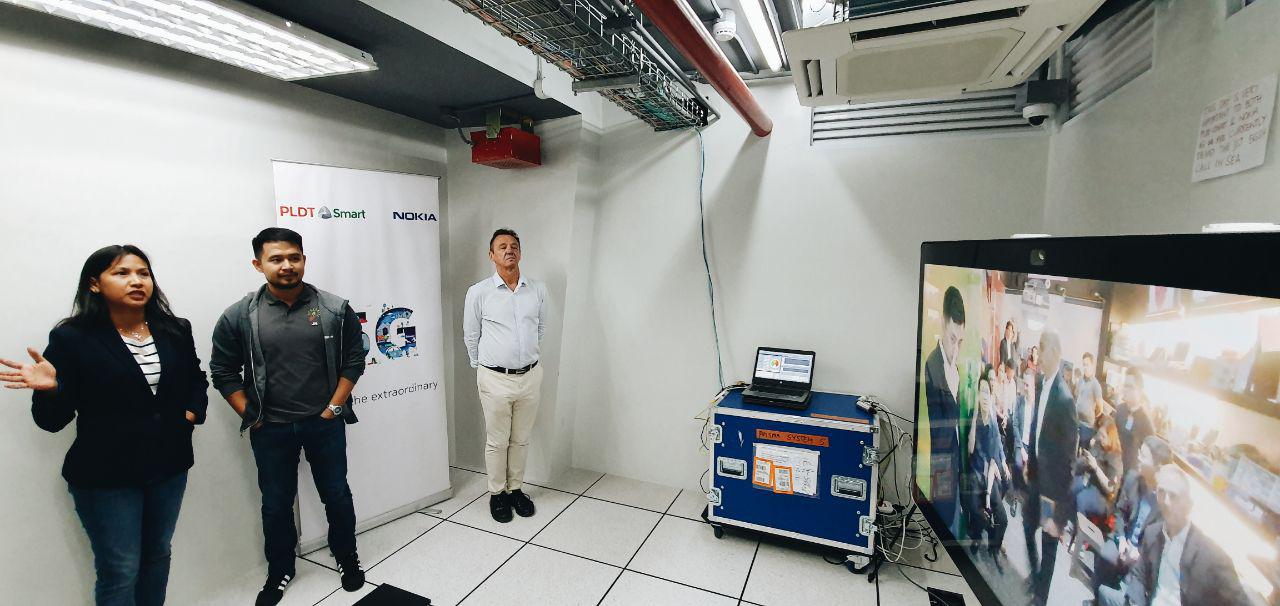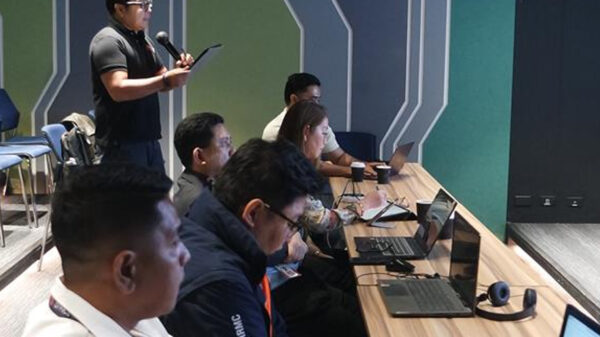PLDT wireless arm Smart Communications, Inc. (Smart) has successfully made the first 5G standalone (5G SA) video call in Southeast Asia, using Nokia’s 5G SA equipment at the PLDT-Smart 5G Technolab in Makati City.
PLDT-Smart executives led by chief information and technical advisor Joachim Horn, Smart chief financial officer Chaye Cabal-Revilla, PLDT Business Transformation Office head Ricky Vargas, PLDT-Smart senior vice president for Network Planning and Engineering Mario G. Tamayo, as well as Nokia officials led by country head for the Philippines Andrew Cope made the video call using Nokia’s 5G SA core, radio and user equipment installed at the PLDT-Smart 5G Technolab.
5G SA has been described as ‘pure 5G’ as it relies solely on 5G for data transmission, and allows the full benefit of 5G capabilities to be tested and demonstrated. In contrast, 5G NSA (non-standalone) combines the use of 5G and existing 4G/LTE resources to transmit data.
5G SA technology paves the way for a variety of new industry applications that utilize 5G’s full features, such as massive connectivity for thousands of devices, ultra-low latency of under 10ms, ultra-high reliability, distributed cloud computing, unified security, and network slicing, among others.
“This is the first 5G implementation which is completely standalone. We don’t need LTE for it. Most 5G implementations today actually need LTE—in fact they’re actually only fast LTE,” said Horn.
“What we’re seeing here–this is real 5G. For the first time, we are experiencing the true capabilities of 5G. For example, 5G’s real low latency can only be achieved in this configuration. This is just the first milestone to show what is possible, and we brought it here to the Technolab,” Horn added.
Ultra-low latency is important for 5G use cases such as video analytics plus industrial robotics control for manufacturing, remote crane/tractor operations in challenging/hazardous environments like mines and ports as well as for real-time gaming with tactitle sensors (chest impact suit, gloves and tactile feedback enabled weapons).
5G partnerships
In March, PLDT-Smart and Nokia signed a Memorandum of Understanding to deploy 5G SA solutions in the Philippines, particularly for schools. Using the combined capabilities of the PLDT-Smart 5G Technolab and the Nokia Technology Center in Quezon City, the companies are collaborating to identify innovative 5G SA solutions, such as artificial intelligence, drones, and Internet of Things (IoT) applications, for example.
In April, PLDT-Smart launched the Ateneo de Manila University as the first “Smart 5G campus”. Under the MoU, PLDT-Smart and Nokia will help set up the Ateneo’s Convergent Technologies Center with a 5G lab, enabling Ateneo’s students and tech experts to co-develop practical and relevant solutions.
Among the applications being eyed for development are IoT solutions, Augmented and Virtual Reality services, robotics, drones, and analytics. To support these research activities, Smart is also deploying 5G base stations in the Ateneo campus.
Smart and Nokia first explored 5G in 2016, when they achieved speeds of 2.5 Gigabits per second (Gbps) using 100 MHz with latency of just 1 millisecond over a ‘live’ network—the first in the Philippines.
Best positioned for 5G
This development is the latest in PLDT and Smart’s series of 5G initiatives. Armed with both fixed and wireless infrastructure powered by the country’s most extensive fiber network now at over 260,000 kilometers, PLDT and Smart are best positioned to deploy 5G in the country.
To deliver 5G services, Smart is currently upgrading its network’s Core and Transport elements, as well as upgrading to fiber the backhaul connecting the network’s cell sites nationwide. Smart is also installing 5G-capable equipment in its ongoing LTE and LTE-Advanced roll-out.
Launched in June 2018, the PLDT-Smart 5G Technolab is the company’s flagship facility for the research and development, standardization, and testing of 5G, and is designed to be a sustainable environment for innovative services.
In November last year, PLDT-Smart also launched the country’s first Smart 5G Cities in Pampanga and Makati. In the same month, they also successfully made the country’s first 5G-to-5G NSA video call between the two 5G Smart cities.
Parent company PLDT has committed historic levels of resources for network transformation. For 2019, PLDT capex is at P78.4 billion.
















































































































